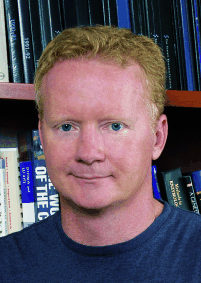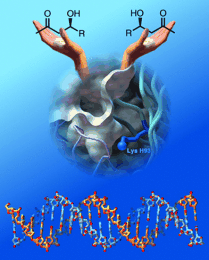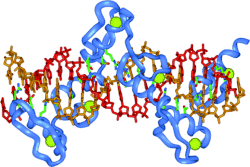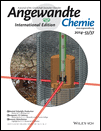Carlos F. Barbas III (1964–2014)
On June 24, 2014, Carlos F. Barbas III, the Janet and Keith Kellogg II Chair professor and member of The Skaggs Institute for Chemical Biology at The Scripps Research Institute (TSRI), passed away at the age of 49 after a heroic battle with a rare form of medullary thyroid cancer. Carlos was a cherished friend, a dedicated mentor to over 230 students, postdocs, interns, and guest scientists, a fabulous colleague, and a devoted father of four. He was a gifted “singular” scientific force with the ability to master both fundamental chemistry and biology at the same time to make revolutionary advances in both disciplines.1

Barbas, who grew up in St. Petersburg, Florida, received a BS degree from Eckerd College, where he conducted undergraduate research with Prof. Wayne C. Guida. Guida recalls that Barbas entered Eckerd College at the age of 16 and was one of the brightest students he ever taught. Barbas would later comment that in spite of double majoring in chemistry and physics, his undergraduate research experience convinced him that his future was in the area of bioorganic chemistry. He earned a PhD in 1989 at Texas A& M University with Prof. Chi-Huey Wong, and conducted postdoctoral studies at Pennsylvania State University (with Prof. Stephen J. Benkovic) and at TSRI (with Prof. Richard A. Lerner). Lerner recognized his talent immediately and as a result he was appointed to the TSRI faculty in 1991.
Barbas made breakthrough contributions in catalysis, gene regulation, and immunotherapy, as reported in more than 330 scientific articles and 58 issued US patents. These studies have led to new classes of therapeutics and vaccines and changed the way therapeutic proteins and druglike molecules are made. He invented novel phage display methods to rapidly discover therapeutic antibodies and clarify our basic understanding of molecular recognition and diversity within antibodies. Using these methods, he identified one of the first and most broadly active neutralizing antibodies against the HIV virus. 1

This stands at the pinnacle of achievements in catalytic antibodies and stimulated widespread study into the underdeveloped area of enamine and imine-based catalysis, an area his lab pioneered. 1

Another outgrowth of these studies involved chemically programmed antibodies, and these are now advancing in human clinical trials for a variety of diseases. He also developed a new class of chemically programmable vaccines (based on aldolase biomimicry) in a study that attracted worldwide attention as a promising approach to solving intractable vaccine challenges.
His application of phage display to DNA recognition allowed Barbas to develop zinc finger transcription factors that mimic natural transcription factors to regulate genes, thus paving the way for new therapeutic treatments and biotechnology applications. 1

Remarkably, each of Barbas’ areas of scientific inquiry have directly or indirectly resulted in a new drug class that is currently in clinical trials or approved for the treatment of a variety of diseases. To translate his research into new therapies, Barbas founded three companies. In 1997, he co-founded Prolifaron, which was acquired by Alexion. In 2002, he started CovX, which was acquired by Pfizer. In 2008, he founded Zyngenia to develop the next generation of antibody-derived drugs.
Barbas received national and international recognition for his work. He was the recipient of the Investigator Award from the Cancer Research Institute, the Presidential Green Chemistry Challenge Award, Arthur C. Cope Scholar Award from the American Chemical Society, a National Institutes of Health (NIH) Director’s Pioneer Award, and the Tetrahedron Young Investigator Award in Bioorganic and Medicinal Chemistry. He was named a Scholar of The American Foundation for AIDS Research and a Fellow of the American Associate for the Advancement of Science. In 2014, Barbas was named a Fellow of the Academy of Microbiology.
Carlos’ memory and legacy will live on at TSRI, in the scientific community at large, and in the clinic where his discoveries were translated into medicines. His incredible list of accomplishments (academic and entrepreneurial) at such a young age could have only been possible in the unique environment of TSRI, a fact he often advertised. Carlos loved to tell jokes, to prank his friends, host legendary parties, race fast cars, go to the gym, and most of all to spend time with his family. To his friends he was fiercely loyal, a shoulder to cry on, and someone you could confide in. He had so much to live for and lived life to the fullest when he could. He would want all of you to do the same.





